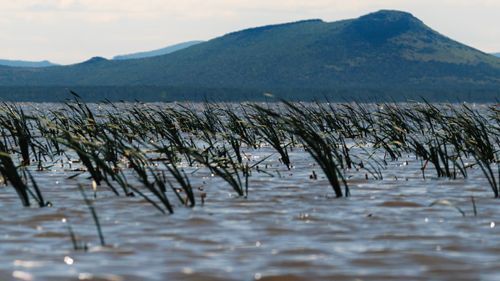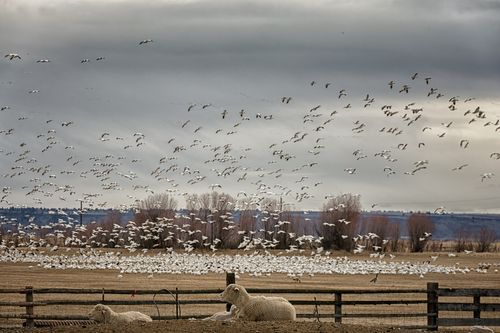HBWC is working to restore and enhance healthy lands and water while nurturing an enduring rural way of life that supports and values wetland conservation in the Harney Basin. Malheur Lake and the Malheur National Wildlife Refuge have significance beyond the local area. This area has international significance for migratory birds and draws people from across the country. The following are the three outcomes HBWC is working to achieve.
Desired Outcomes

Malheur Lake spring 2023 with emergent vegetation growing.
Revive Malheur Lake by improving water quality and restoring freshwater marshes. Restoring and sustaining Harney Basin wetland conditions and clear water habitat is the primary goal for Malheur Lake. Managing the nonnative common carp population, reintroduction of submergent and emergent vegetation and restoring marsh conditions are objectives that will help achieve this goal.
HBWC has supported research clarifying the potential for carp population control, studied the factors affecting plant establishment in Malheur Lake, and researched other methods to reduce the very high turbidity of the lake. Through this improved understanding and knowledge HBWC partners are developing strategies to reverse the degraded conditions and improve restoration success.

Wild flood irrigated wet meadow shared by sheep, snow geese and Canada geese. Photograph by local rancher and avid photographer Susan Doverspike
Conservation and maintenance of flood irrigated wet meadows through improved infrastructure and management. The Harney Basin is characterized by extremely high year-to-year weather variation; ranchers and farmers have had to adapt to this variability. Climate change adaptation often involves projecting future climate trajectories. In addition, irrigation infrastructure is typically old and too expensive to replace without assistance. This condition leads to inefficient use of water and conflicts over distribution. Improved infrastructure improves management that is optimized for both bird habitat and forage production. Flood-irrigated wet meadow conservation will ensure that there is a continued emphasis to provide flood-irrigated spring migratory bird habitat in this highly variable system through targeted conservation efforts. Management and distribution of water across the floodplain and the effects of timing, duration, and depth of water on plant communities have become crucial to providing the migratory bird habitats that will sustain the Pacific Flyway. Success is based on private land practices that assure the maintenance or enhancement of wild flood-irrigation practices for the mutual benefit of ranchers' forage production and healthy habitat for migratory and resident birds.

Harney Basin Wetlands Collaborative summer 2025 tour of the Harney Basin including a stop and conversation at the Malheur National Wildlife Refuge.
Awareness, attention and trust from multiple audiences. Engaging the community with HBWC restoration and management efforts, both locally and beyond Harney County, will build greater awareness, garner attention, and deepen trust as audiences engage in this conservation journey. Growth in awareness, attention, and trust will also generate greater public support and social license for actions to revive Malheur Lake as management decisions are explored, tested, and implemented.

